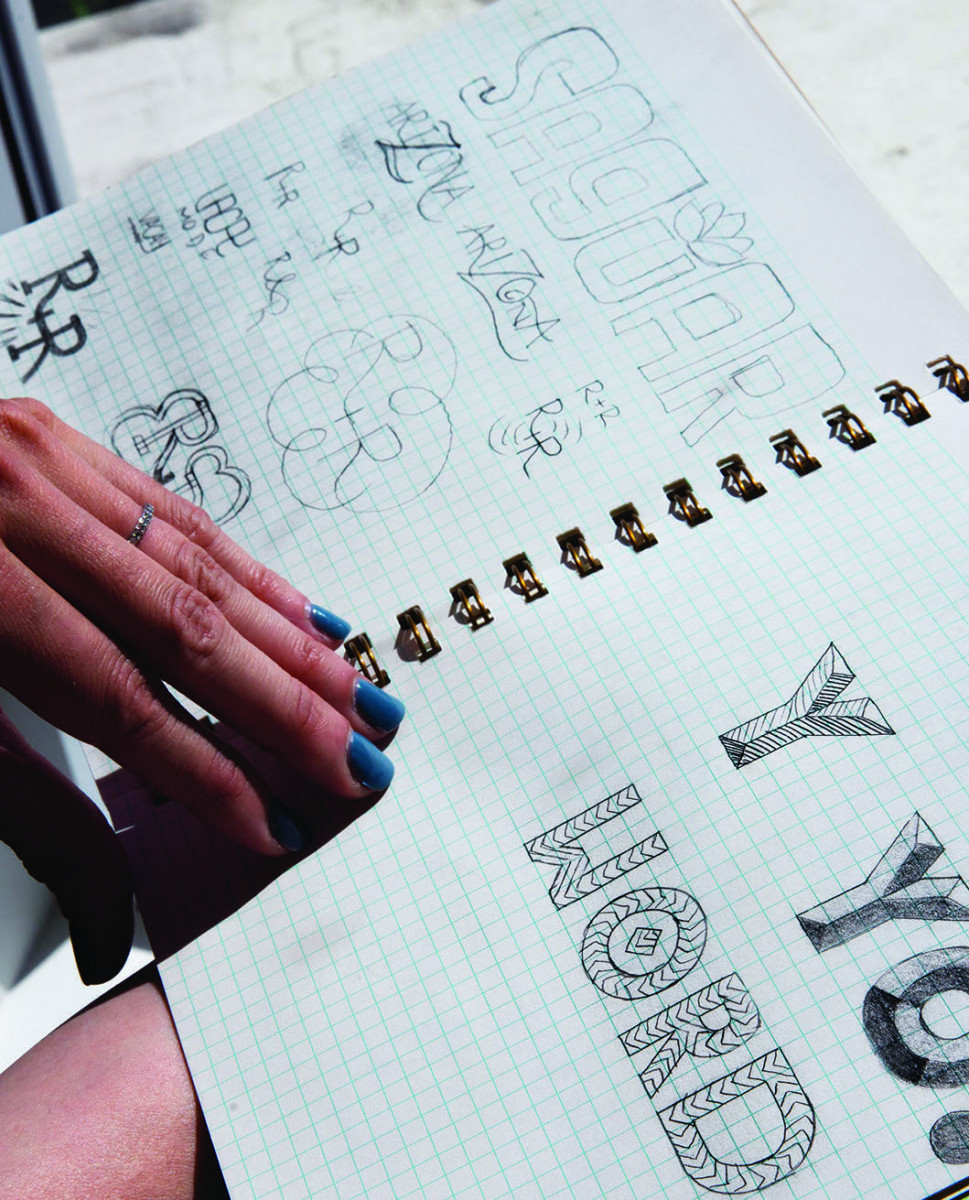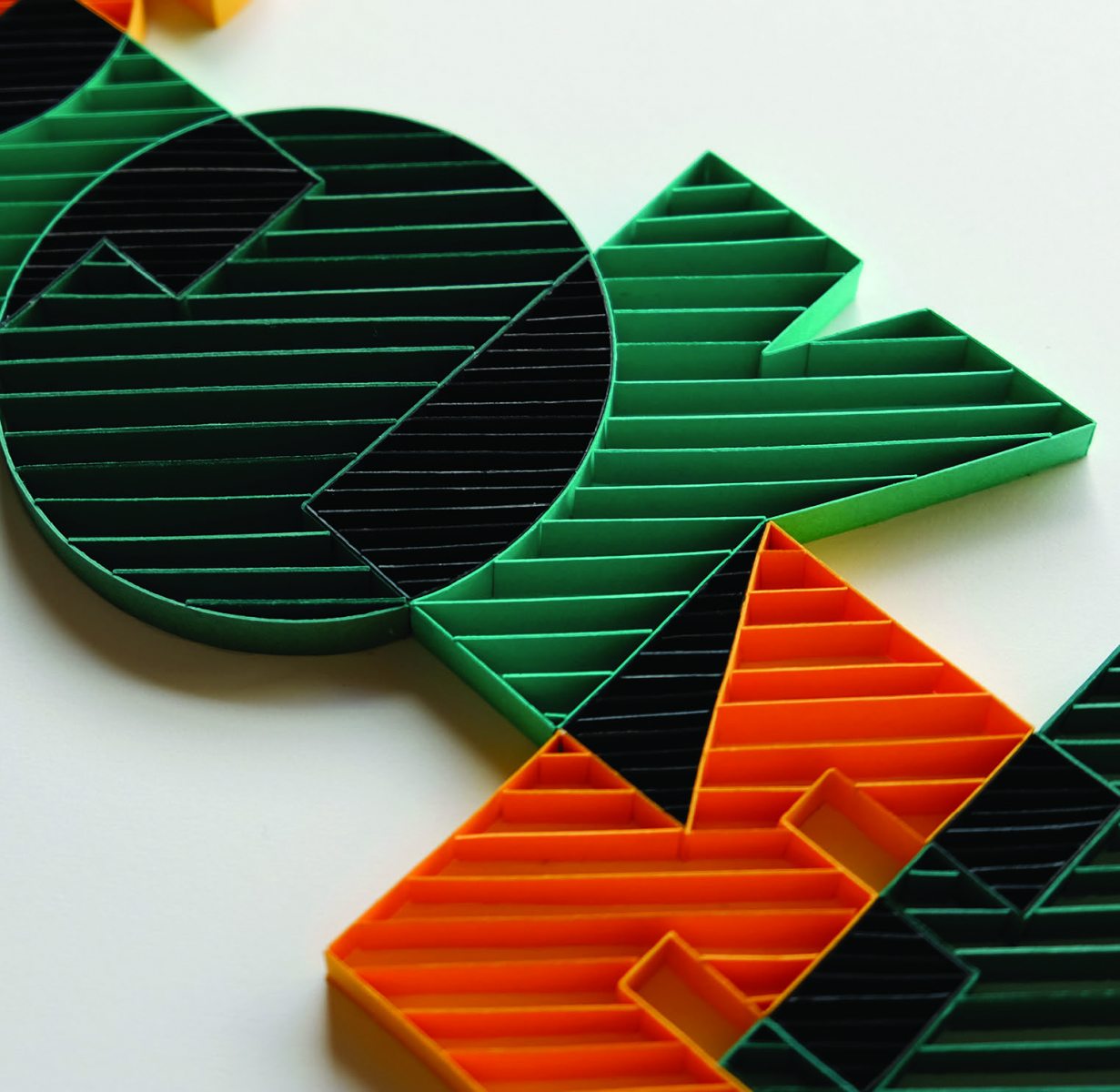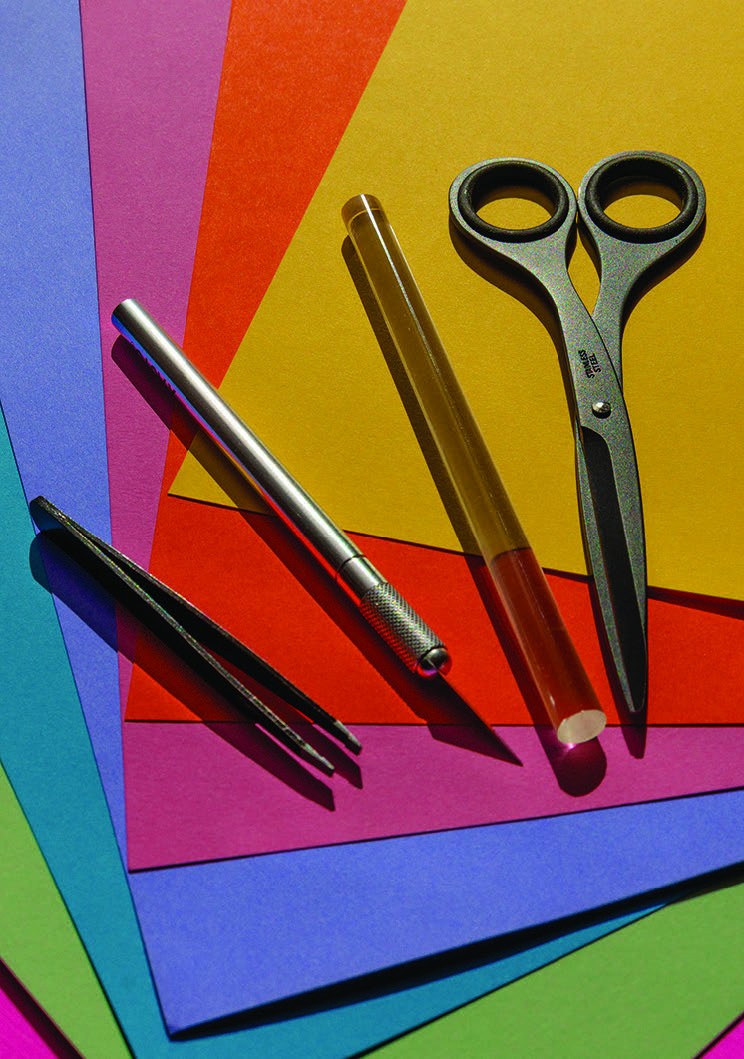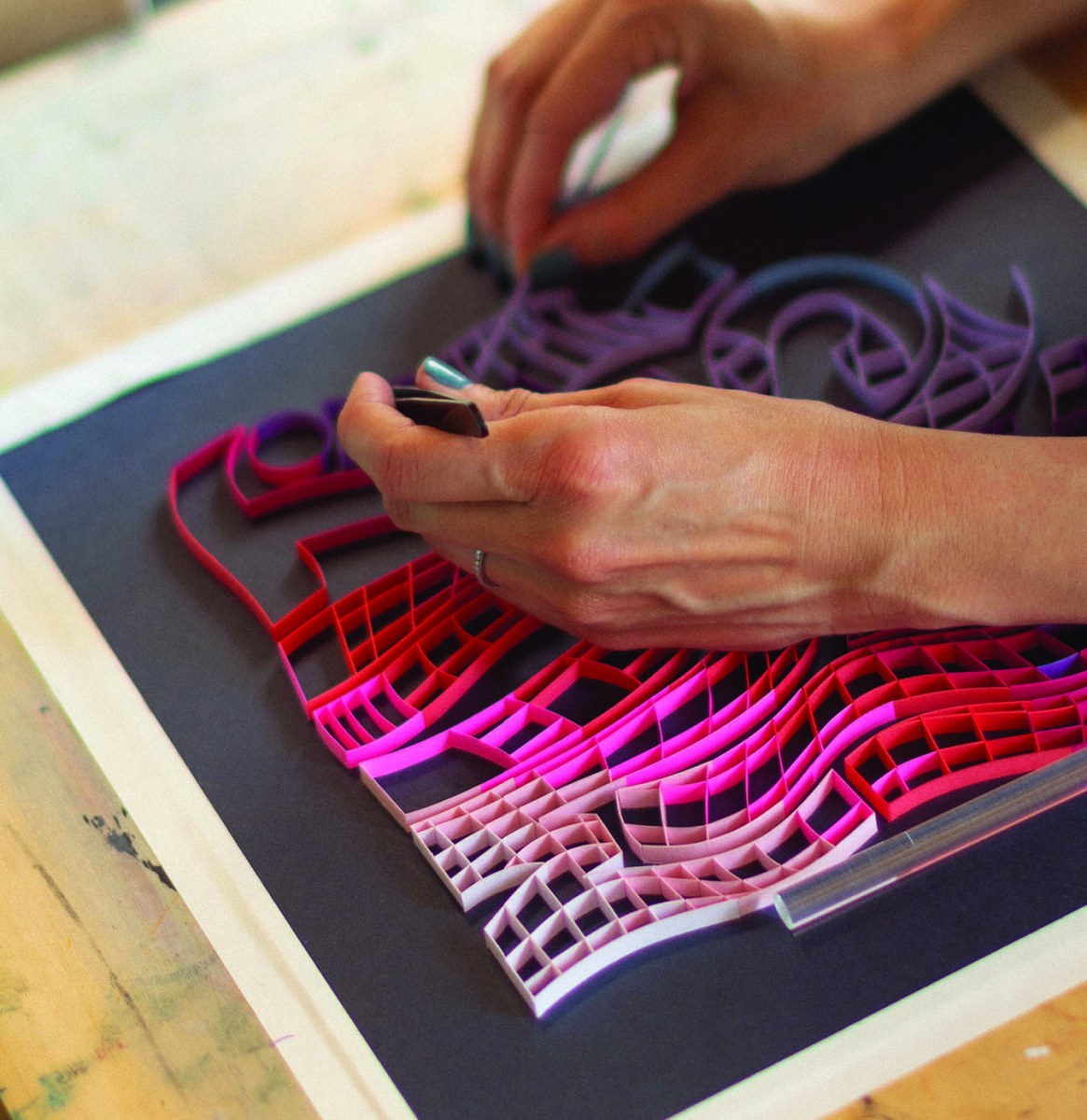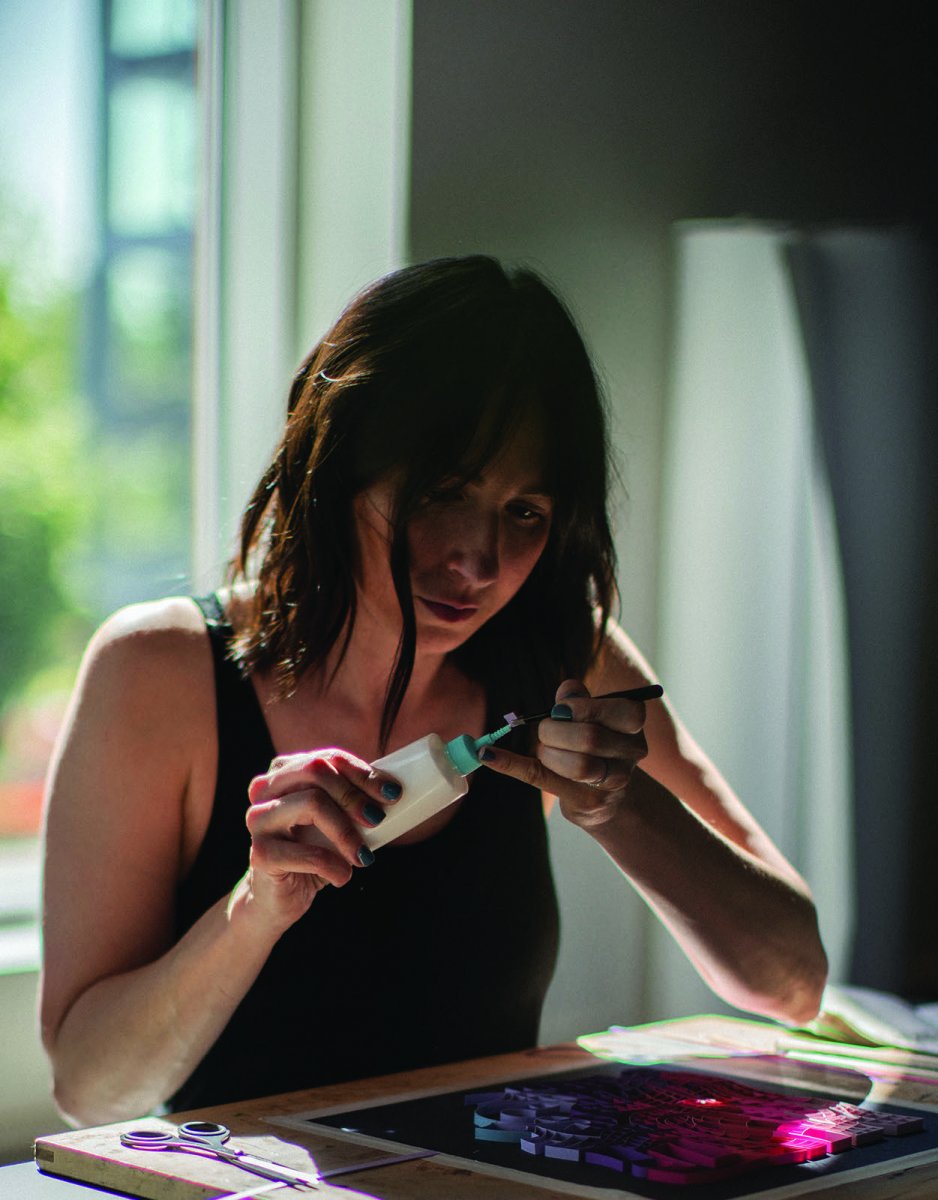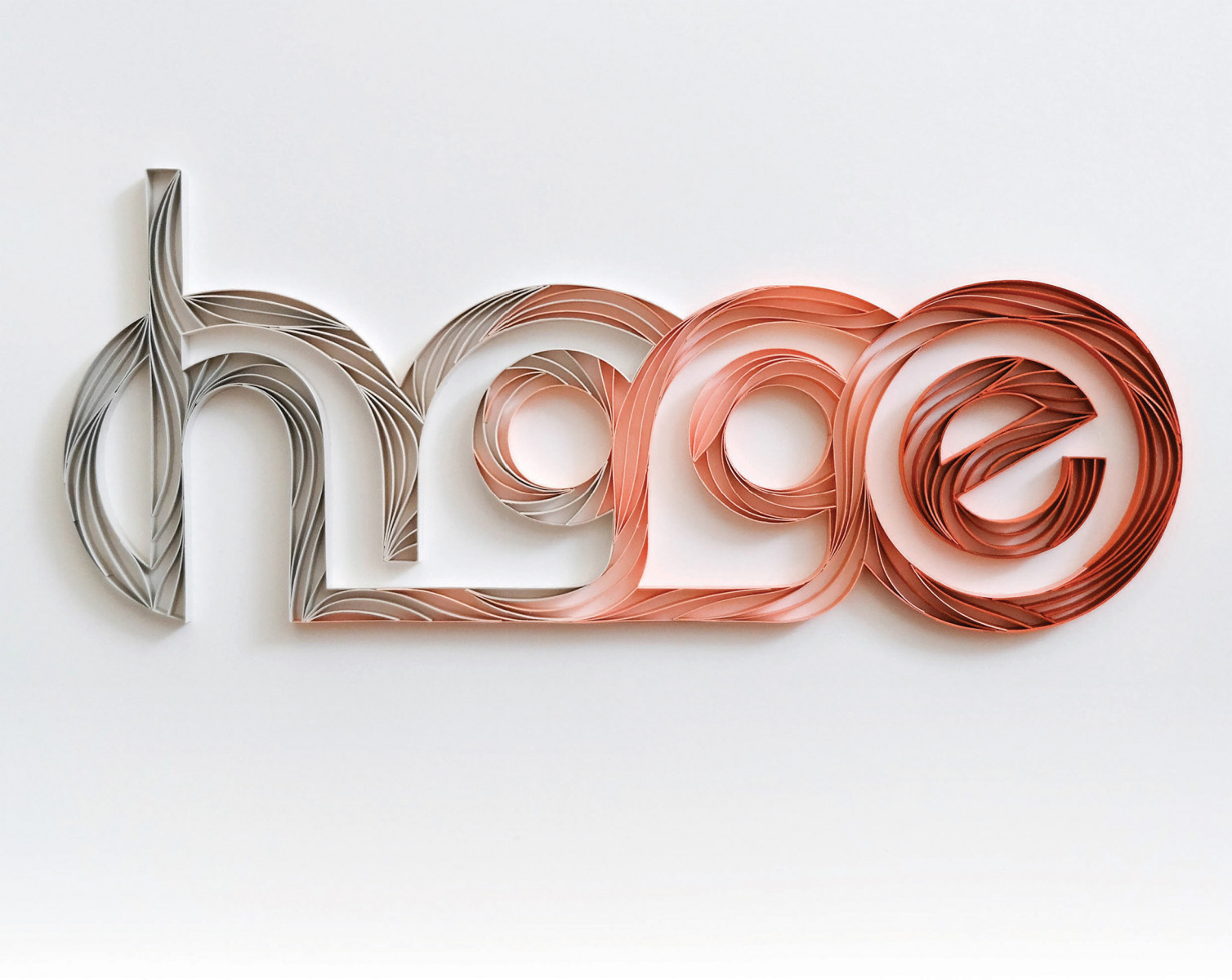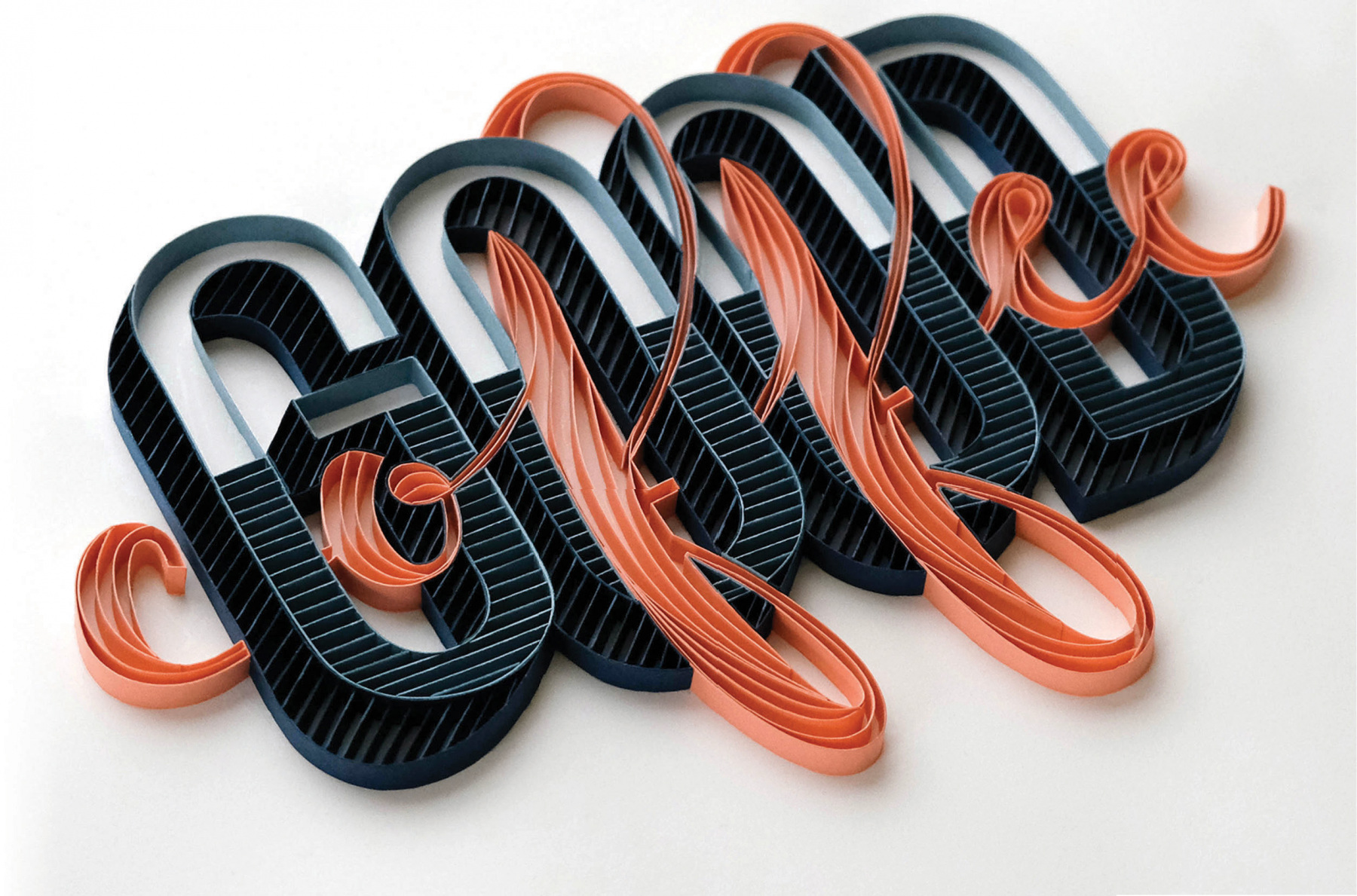I live in Portland, OR, in an old house among the trees. I grew up in Palo Alto, CA, with my parents and two older brothers. I’m very close to my family! I also grew up among my expansive Pakistani family, who all lived within 5 miles of my house. Our home was the hub for the whole family for many years because my grandma (dad’s mom) lived with us for almost my entire young life. We had a true open- door policy, with my aunts, uncles, and cousins always coming through. I have entrepreneurial siblings as well. One of my brothers owns several bars and restaurants in Palo Alto, and and my other brother produces reggae music.
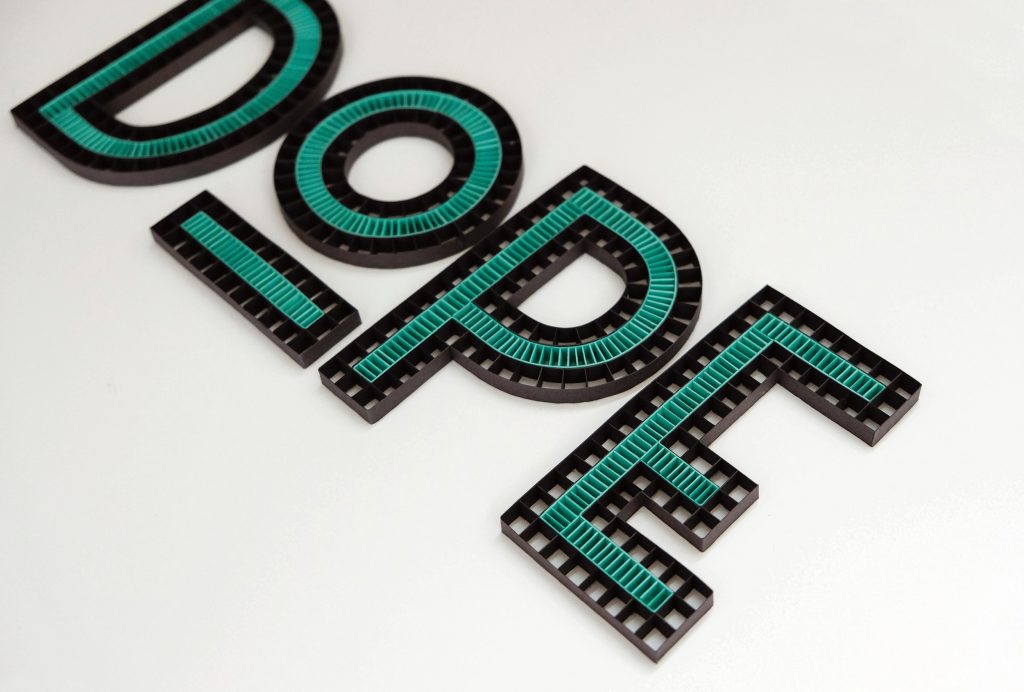
Though I was the only one in my family interested in pursuing visual arts, I always had absolute support from my parents to do so. Strangely, I never took a single art class in high school. I just never thought to—art was something I did on my own time. Though I can’t remember a time when drawing was not my favorite thing to do, I had actually never considered that art could be a viable career path. In fact, I had all my college applications filled out with my major as Mechanical Engineering and accounting (I like numbers). But after an eye-opening conversation with my then boss and mentor at IDEO, where I had an after-school job, I busted out the white-out and changed all my applications to Fine Arts, literally the night before mailing them out!
I ended up attending UC Santa Cruz, studying fine arts with an emphasis in drawing. During my first year at college, I realized it was not the right avenue for me. Though I loved to draw, I didn’t feel like I was bringing my voice to any drawing projects, and frankly wasn’t interested in doing so enjoyed the process of drawing, and the subject matter was secondary. I was enamored with the world of graphic design, which allowed me to think conceptually and problem solve through creativity. In many ways I’m a left-brained creative, so design was a perfect mix for me of using art to get to a “correct” answer.
I ended up transferring to UCLA’s Design | Media Arts program and, due to how the program was structured, came out with a little experience in a broad range of design practices (print, web, motion).
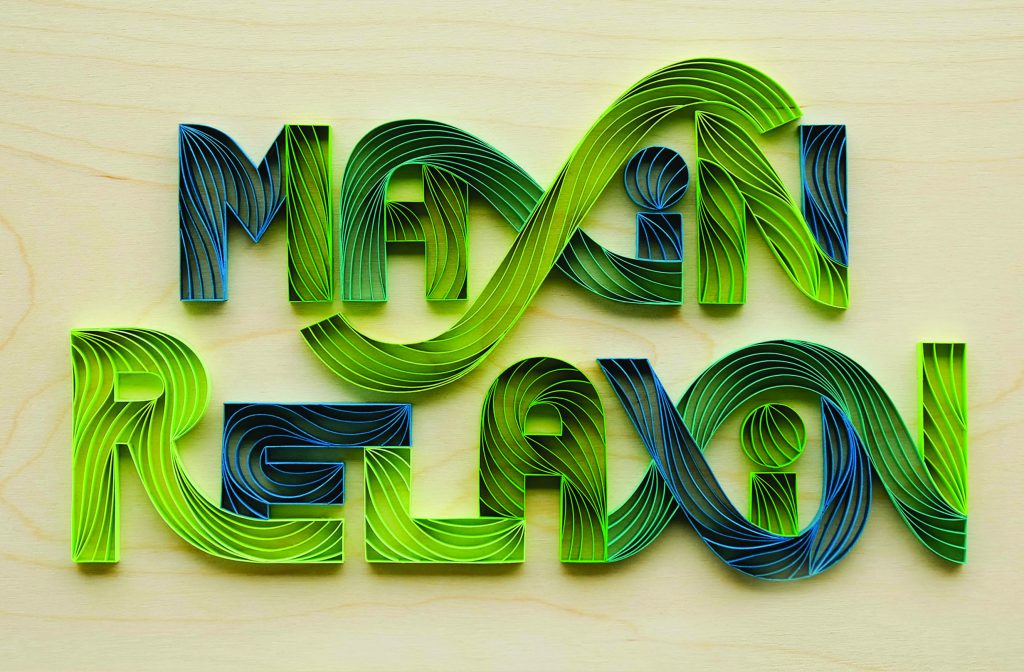
My career path has always been art and design centric. After graduating from UCLA, I intended to work in more traditional graphic design, designing for print, but instead I ended up for many years at Old Navy in San Francisco, ultimately leading an apparel graphics department. That is where I really explored illustration and hand lettering for the first time (not to mention honing the niche craft of drawing animals wearing sunglasses). Working with ever-evolving trends at Old Navy afforded me a unique opportunity to explore and create in many different styles. I grew to love hand lettering here; not only for the fun of the creative expression, but often because it was so much faster to draw exactly what I wanted than it was to sift through the 10,000 fonts on the server!
The other side of that coin is that so many years of constant production and sitting in front of a computer led to a kind of burnout that made me crave analog creation again—working with my hands and making something without an “undo” command at my fingertips. After nearly 7 years there, I transitioned to freelance to get back to my design roots and explore personal projects and have been doing that for almost 10 years now!
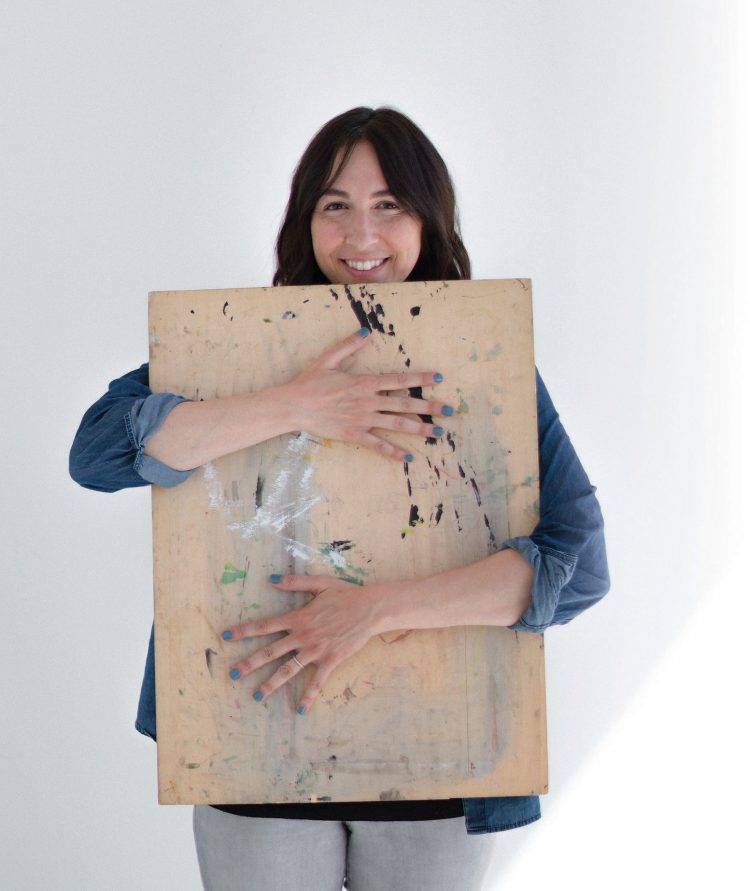 I have long had a passion for typography, and later hand lettering, but what really got away from me during my years designing apparel graphics is the satisfaction and connection that comes with building something by hand. I feel so fortunate to have found the perfect vehicle for me to fully engage in both lettering and tactile creation. Though I have enjoyed honing many facets of design and lettering, it wasn’t until I began quilling that I found what I would consider to be my true artistic voice. I love being able to take this craft and do something totally different with it.
I have long had a passion for typography, and later hand lettering, but what really got away from me during my years designing apparel graphics is the satisfaction and connection that comes with building something by hand. I feel so fortunate to have found the perfect vehicle for me to fully engage in both lettering and tactile creation. Though I have enjoyed honing many facets of design and lettering, it wasn’t until I began quilling that I found what I would consider to be my true artistic voice. I love being able to take this craft and do something totally different with it.
Quilling is the art of shaping strips of paper and meticulously cutting and placing them on edge to create precise designs. I’m aware now it has a long history dating back to the Renaissance or even ancient Egypt, but if I’m being honest, I didn’t even know what it was called when I started doing it. My work with paper was born out of my penchant for procrastination. I found myself on Christmas Eve 2012 with no wrapping paper or bows. With a roll of kraft paper, an old assortment of scrapbooking paper, and Pinterest, I started to make gift bows. The satisfaction of building something from hand was addicting. I vaguely remembered seeing quilling art several years earlier, and without knowing what it was called or how to do it, I dove in headfirst—I’ve been obsessed ever since. For the first few years I created impressionistic interpretations of Star Wars superhero masks. I didn’t end up marrying my paper and art with my long-held love of hand lettering until 4 years ago—this is when things really clicked for me.
To some degree the medium I work in requires a good amount of restraint. As it inherently creates its own visual complexity, I have to be careful to find that sweet spot where the three dimensional aspect of the paper highlights the lettering and vice versa—not letting one muddle or overcrowd the other—maintaining the right level of stylistic simplicity while still creating visual interest through color, pattern, and shadows.
I really look within for material. It’s most fun for me to letter phrases or words I have some attachment to, whether it’s an album that means something to me, a thing or place I love, or even just a word or concept I like. These are things that make me feel connected to my work and make my choices authentic.
Do you ever wonder what role artists have in society? There is either no answer to this question, or there’s any answer you want. Artists are storytellers. I don’t think it has to be obvious what that story is—it can be intensely personal—but I believe the most compelling work carries a story with it, whether the viewer knows it or not. I think as humans we need to enjoy things for their form, and not just function, whether it’s a postage stamp, the box our laptop comes in, or a piece of art on a gallery wall. It’s part of what keeps our brains really alive.
I usually start with pencil and paper, sketching out ideas and letterforms. (These sketches can be embarrassingly rough—I do not have cool looking sketchbook pages.) Once I’ve landed on a direction, I take my sketch onto the computer and rework and refine it. Once the piece is designed, I sort through color combos, hand cut the paper into 1⁄4″ strips, and start building. Using a custom acrylic shaping tool, tweezers, and glue, I form the strips and carefully cut them to size before gluing them in place.
Though my art can sometimes be visually complex, the message is simple—I’m just sharing myself. Sometimes that will come with messages that can be more weighty, but it can also be a favorite place or word of mine. I don’t aim for a message beyond self-expression because for me, personally, that would feel forced. I like colors, words, coffee, and music.
It would seem obvious for me to say that my favorite studio item is my massive collection of paper, but really it’s my beat up old balsa wood work board. It is beautifully tarnished with paint, ink, and glue and I tape all my pieces onto it while I work on them. I like all the history that patina shows.
Simple but compelling, minimal but not stark, and playful without being overwhelming, I try to strike a balance between play and precision in all of my work.
The biggest creative challenge I face is how time- intensive each piece is. That makes it difficult to keep creating new work, as even a few hours of work can sometimes barely make a dent in the progress. With two young kids, it can be really tough to find the time needed to finish a piece!
My finest accomplishment so far was landing an illustration agent. It had been a long time goal of mine for my lettering, even before quilling came into the picture, but I made sure to wait until I felt I had a point of view and a voice to pitch. Getting representation was momentous because it really helped solidify my move to becoming a professional paper artist by allowing me to focus solely on the art (and pass off the contracts, negotiations, and other “glamour jobs” to some good people who know what they’re doing).
Since getting representation last year, I’ve been so lucky to have worked on super fun projects with Band- Aid Brand and Wix. At the moment I’m just trying to keep my creativity from evaporating, as we all navigate what our new normal looks like. I’ve been fortunate to continue to have projects to work on, and hopefully 2021 will bring with it more headspace. And paper.
Is there a way to say “believe in yourself” without being bogged down by cliché?
For a while before I landed my first full-time job, when people would ask me what I did, I literally could not answer “I’m a graphic designer” because it felt somehow fraudulent. Something similar happened when I started building my business as a paper artist; I found it difficult at first to tell people “I’m an artist,” despite having created art for pleasure and work for my whole life. These limiting beliefs didn’t serve me at all, and once I banished them from my mind I felt totally liberated. There is real power in manifesting something by visualizing and believing in it. That’s not to say I don’t still suffer from bouts of Imposter Syndrome, like most creatives do, but I can acknowledge that I’m awesome, I love the work I create, and that I add value to the creative community.
Moving forward I’m looking to experiment with scale and new materials and substrates. I am excited to explore all the ways I can push this art form to the next level!
I live in Portland, OR, in an old house among the trees. I grew up in Palo Alto, CA, with my parents and two older brothers. I’m very close to my family! I also grew up among my expansive Pakistani family, who all lived within 5 miles of my house. Our home was the hub for the whole family for many years because my grandma (dad’s mom) lived with us for almost my entire young life. We had a true open- door policy, with my aunts, uncles, and cousins always coming through. I have entrepreneurial siblings as well. One of my brothers owns several bars and restaurants in Palo Alto, and and my other brother produces reggae music.

Though I was the only one in my family interested in pursuing visual arts, I always had absolute support from my parents to do so. Strangely, I never took a single art class in high school. I just never thought to—art was something I did on my own time. Though I can’t remember a time when drawing was not my favorite thing to do, I had actually never considered that art could be a viable career path. In fact, I had all my college applications filled out with my major as Mechanical Engineering and accounting (I like numbers). But after an eye-opening conversation with my then boss and mentor at IDEO, where I had an after-school job, I busted out the white-out and changed all my applications to Fine Arts, literally the night before mailing them out!
I ended up attending UC Santa Cruz, studying fine arts with an emphasis in drawing. During my first year at college, I realized it was not the right avenue for me. Though I loved to draw, I didn’t feel like I was bringing my voice to any drawing projects, and frankly wasn’t interested in doing so enjoyed the process of drawing, and the subject matter was secondary. I was enamored with the world of graphic design, which allowed me to think conceptually and problem solve through creativity. In many ways I’m a left-brained creative, so design was a perfect mix for me of using art to get to a “correct” answer.
I ended up transferring to UCLA’s Design | Media Arts program and, due to how the program was structured, came out with a little experience in a broad range of design practices (print, web, motion).

My career path has always been art and design centric. After graduating from UCLA, I intended to work in more traditional graphic design, designing for print, but instead I ended up for many years at Old Navy in San Francisco, ultimately leading an apparel graphics department. That is where I really explored illustration and hand lettering for the first time (not to mention honing the niche craft of drawing animals wearing sunglasses). Working with ever-evolving trends at Old Navy afforded me a unique opportunity to explore and create in many different styles. I grew to love hand lettering here; not only for the fun of the creative expression, but often because it was so much faster to draw exactly what I wanted than it was to sift through the 10,000 fonts on the server!
The other side of that coin is that so many years of constant production and sitting in front of a computer led to a kind of burnout that made me crave analog creation again—working with my hands and making something without an “undo” command at my fingertips. After nearly 7 years there, I transitioned to freelance to get back to my design roots and explore personal projects and have been doing that for almost 10 years now!
 I have long had a passion for typography, and later hand lettering, but what really got away from me during my years designing apparel graphics is the satisfaction and connection that comes with building something by hand. I feel so fortunate to have found the perfect vehicle for me to fully engage in both lettering and tactile creation. Though I have enjoyed honing many facets of design and lettering, it wasn’t until I began quilling that I found what I would consider to be my true artistic voice. I love being able to take this craft and do something totally different with it.
I have long had a passion for typography, and later hand lettering, but what really got away from me during my years designing apparel graphics is the satisfaction and connection that comes with building something by hand. I feel so fortunate to have found the perfect vehicle for me to fully engage in both lettering and tactile creation. Though I have enjoyed honing many facets of design and lettering, it wasn’t until I began quilling that I found what I would consider to be my true artistic voice. I love being able to take this craft and do something totally different with it.
Quilling is the art of shaping strips of paper and meticulously cutting and placing them on edge to create precise designs. I’m aware now it has a long history dating back to the Renaissance or even ancient Egypt, but if I’m being honest, I didn’t even know what it was called when I started doing it. My work with paper was born out of my penchant for procrastination. I found myself on Christmas Eve 2012 with no wrapping paper or bows. With a roll of kraft paper, an old assortment of scrapbooking paper, and Pinterest, I started to make gift bows. The satisfaction of building something from hand was addicting. I vaguely remembered seeing quilling art several years earlier, and without knowing what it was called or how to do it, I dove in headfirst—I’ve been obsessed ever since. For the first few years I created impressionistic interpretations of Star Wars superhero masks. I didn’t end up marrying my paper and art with my long-held love of hand lettering until 4 years ago—this is when things really clicked for me.
To some degree the medium I work in requires a good amount of restraint. As it inherently creates its own visual complexity, I have to be careful to find that sweet spot where the three dimensional aspect of the paper highlights the lettering and vice versa—not letting one muddle or overcrowd the other—maintaining the right level of stylistic simplicity while still creating visual interest through color, pattern, and shadows.
I really look within for material. It’s most fun for me to letter phrases or words I have some attachment to, whether it’s an album that means something to me, a thing or place I love, or even just a word or concept I like. These are things that make me feel connected to my work and make my choices authentic.
Do you ever wonder what role artists have in society? There is either no answer to this question, or there’s any answer you want. Artists are storytellers. I don’t think it has to be obvious what that story is—it can be intensely personal—but I believe the most compelling work carries a story with it, whether the viewer knows it or not. I think as humans we need to enjoy things for their form, and not just function, whether it’s a postage stamp, the box our laptop comes in, or a piece of art on a gallery wall. It’s part of what keeps our brains really alive.
I usually start with pencil and paper, sketching out ideas and letterforms. (These sketches can be embarrassingly rough—I do not have cool looking sketchbook pages.) Once I’ve landed on a direction, I take my sketch onto the computer and rework and refine it. Once the piece is designed, I sort through color combos, hand cut the paper into 1⁄4″ strips, and start building. Using a custom acrylic shaping tool, tweezers, and glue, I form the strips and carefully cut them to size before gluing them in place.
Though my art can sometimes be visually complex, the message is simple—I’m just sharing myself. Sometimes that will come with messages that can be more weighty, but it can also be a favorite place or word of mine. I don’t aim for a message beyond self-expression because for me, personally, that would feel forced. I like colors, words, coffee, and music.
It would seem obvious for me to say that my favorite studio item is my massive collection of paper, but really it’s my beat up old balsa wood work board. It is beautifully tarnished with paint, ink, and glue and I tape all my pieces onto it while I work on them. I like all the history that patina shows.
Simple but compelling, minimal but not stark, and playful without being overwhelming, I try to strike a balance between play and precision in all of my work.
The biggest creative challenge I face is how time- intensive each piece is. That makes it difficult to keep creating new work, as even a few hours of work can sometimes barely make a dent in the progress. With two young kids, it can be really tough to find the time needed to finish a piece!
My finest accomplishment so far was landing an illustration agent. It had been a long time goal of mine for my lettering, even before quilling came into the picture, but I made sure to wait until I felt I had a point of view and a voice to pitch. Getting representation was momentous because it really helped solidify my move to becoming a professional paper artist by allowing me to focus solely on the art (and pass off the contracts, negotiations, and other “glamour jobs” to some good people who know what they’re doing).
Since getting representation last year, I’ve been so lucky to have worked on super fun projects with Band- Aid Brand and Wix. At the moment I’m just trying to keep my creativity from evaporating, as we all navigate what our new normal looks like. I’ve been fortunate to continue to have projects to work on, and hopefully 2021 will bring with it more headspace. And paper.
Is there a way to say “believe in yourself” without being bogged down by cliché?
For a while before I landed my first full-time job, when people would ask me what I did, I literally could not answer “I’m a graphic designer” because it felt somehow fraudulent. Something similar happened when I started building my business as a paper artist; I found it difficult at first to tell people “I’m an artist,” despite having created art for pleasure and work for my whole life. These limiting beliefs didn’t serve me at all, and once I banished them from my mind I felt totally liberated. There is real power in manifesting something by visualizing and believing in it. That’s not to say I don’t still suffer from bouts of Imposter Syndrome, like most creatives do, but I can acknowledge that I’m awesome, I love the work I create, and that I add value to the creative community.
Moving forward I’m looking to experiment with scale and new materials and substrates. I am excited to explore all the ways I can push this art form to the next level!


 I have long had a passion for typography, and later hand lettering, but what really got away from me during my years designing apparel graphics is the satisfaction and connection that comes with building something by hand. I feel so fortunate to have found the perfect vehicle for me to fully engage in both lettering and tactile creation. Though I have enjoyed honing many facets of design and lettering, it wasn’t until I began quilling that I found what I would consider to be my true artistic voice. I love being able to take this craft and do something totally different with it.
I have long had a passion for typography, and later hand lettering, but what really got away from me during my years designing apparel graphics is the satisfaction and connection that comes with building something by hand. I feel so fortunate to have found the perfect vehicle for me to fully engage in both lettering and tactile creation. Though I have enjoyed honing many facets of design and lettering, it wasn’t until I began quilling that I found what I would consider to be my true artistic voice. I love being able to take this craft and do something totally different with it.
